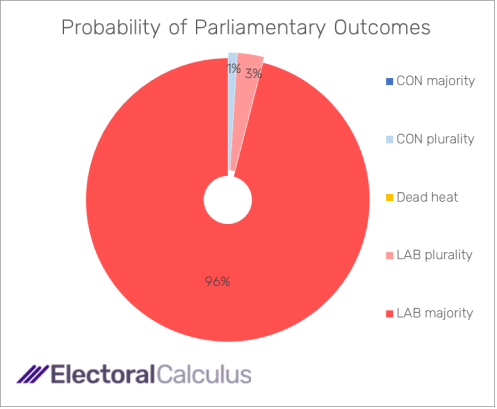It is reasonable for the Conservatives to talk about making a recovery when the hole they are in could hardly be deeper. Given Labour's lead of 18 percent in the average of October polls, the most likely outcome if a general election were held today would be a Labour government with a lead of more than 300 seats. The Tory's 131 seats would be the party's worst result since the introduction of universal suffrage a century ago.
The government's dire standing poses an immediate question for Rishi Sunak: What can the Prime Minister realistically do that would lead to a Tory recovery? Oddly enough, the party's by-election defeats in the previously safe seats of Tamworth and Mid-Bedfordshire offer a clue. In both constituencies the Conservative vote dropped far more than the Labour vote rose. In Tamworth the Conservative vote fell by more than twenty thousand votes while Labour went up by only 810 votes. In Mid-Bedfordshire, the Conservative vote fell by more than twenty-four thousand while the vote of the victor, Labour, fell by 156 votes.

The Conservatives lost both by-elections because well over half the voters who supported the Tory candidate at the 2019 general election stayed home. This produced a fall in turnout of up to 28 percent in both constituencies. If only a small fraction of Tory voters who stayed home had gone to the polls, the party would have held on to both seats. Thus, a realistic Conservative strategy for an electoral recovery is to mobilize people who have previously voted Conservative to turn out to vote when the next general election is called. It could stress both benefits and fears, for example, telling Tory stay-at-homes that a Conservative government would reduce inheritance tax while Labour would allow it to rise with inflation.
The key questions a Tory recovery would raise for Sir Keir Starmer as well as Rishi Sunak is: How many seats would the Conservatives gain by getting former supporters to turn out to vote? Would the gain in seats be enough to deprive Labour of its current 96 percent likelihood of winning a majority at the next general election?
A September YouGov poll reported that among respondents who had voted Conservative in 2019, a total of seven percent said they wouldn't vote at the next general election and 21 percent were don't knows. If Sunak were to get all these it would boost the Conservative vote at the next election by about 4 percentage points. This would leave it almost 15 percentage points behind Labour, assuming Sir Keir Starmer's Labour Party would not pursue a parallel policy of appealing to the nine percent of former supporters who voted for Jeremy Corbyn in 2019.
A big return to the ballot box of stay-at-home Tories would not be enough to get the Tories out of the hole they are in. It could enable the Conservatives to hold fifty-six more seats than they look likely to win at present. However, such a recovery would leave them sitting on the Opposition benches for five years because Labour would sit comfortably in government with a a likely total of 396 seats.
Richard Rose is Britain's senior psephologist and an expert on party government. His new book 'How Sick is British Democracy?: a Clinical Analysis' is published by Palgrave.